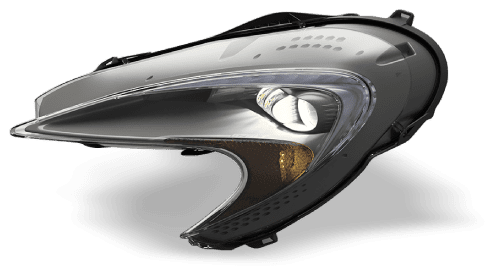
Determining the Brightness of LED Lights: Lumens vs. Watts

Automotive LED lighting has transformed vehicle performance and safety, but confusion persists about measuring brightness. Many drivers still rely on watts to determine LED output, leading to poor purchasing decisions and suboptimal lighting performance.
Understanding the fundamental difference between lumens and watts ensures you select the right LED lighting for your specific automotive needs.
Modern vehicles demand precise lighting solutions that deliver consistent performance across diverse conditions. Whether upgrading headlights, installing auxiliary lighting, or enhancing interior illumination, the brightness measurement you choose determines visibility, safety, and overall satisfaction with your lighting investment.
If you need help determining the brightness of LED lights, and comparing lumens and watts, then follow this comprehensive guide to learn the essentials now.
Lumens: The True Measure of LED Brightness
Lumens quantify the total amount of visible light emitted by an LED source. This measurement represents actual light output that affects visibility and performance in automotive applications.
Unlike other metrics that describe electrical consumption or theoretical capacity, lumens directly correlate with the brightness you experience while driving.
Key Lumen Metrics
LED headlights typically produce between 3,000 and 12,000 lumens per bulb, depending on design and intended application. High-performance automotive LEDs can exceed 15,000 lumens for specialized uses like off-road lighting or commercial vehicle applications.
These values represent measurable light output that translates directly to improved visibility and enhanced safety.
The lumen measurement accounts for the complete light spectrum and intensity distribution of LED sources. Advanced automotive LEDs optimize lumen output through precise chip placement, thermal management, and optical design.
This comprehensive approach ensures maximum usable light reaches the road surface, where it provides practical benefit to drivers.
Watts: A Misleading Metric for LED Lighting
Watts measure electrical power consumption rather than light output. This fundamental distinction makes wattage an unreliable indicator of LED brightness in automotive applications.
Traditional incandescent bulbs maintained a predictable relationship between watts and brightness, but LED technology breaks this correlation completely.
High-efficiency LEDs produce more lumens per watt than lower-quality alternatives. A premium automotive LED might generate 150 lumens per watt, while a basic unit produces only 80 lumens per watt.
Identical wattage ratings can result in drastically different brightness levels, making watts useless for comparing LED performance.
Vehicle electrical systems benefit from lower-wattage LED installations. Reduced power consumption decreases alternator load, improves fuel efficiency, and minimizes heat generation within the electrical system. However, these advantages become meaningless if insufficient lumen output compromises visibility and safety.
The Lumen-to-Watt Ratio: What It Tells You
Comparing lumens and watts is important if you want to determine the brightness of LED lights. Both measurements are critical, but they tell you something different about your lighting setup.
Luminous efficacy, expressed as lumens per watt, reveals LED efficiency and quality. This ratio indicates how effectively an LED converts electrical energy into visible light.
Higher ratios demonstrate superior engineering, better materials, and more advanced manufacturing processes that benefit automotive applications.
Premium automotive LEDs achieve luminous efficacy ratings between 120 and 180 lumens per watt. These efficient designs reduce electrical load on vehicle systems while maximizing light output for improved visibility. Lower-quality LEDs typically produce 60 to 100 lumens per watt, requiring more electrical power to achieve comparable brightness.

The Power of Thermal Management
Thermal management directly impacts luminous efficacy in automotive environments. Engine compartment heat, electrical system fluctuations, and ambient temperature changes affect LED performance.
Quality automotive LEDs maintain high luminous efficacy across temperature ranges through advanced heat dissipation and robust electrical design.
Choosing the Right LED Brightness for Your Vehicle
Headlight applications require a careful balance between maximum visibility and legal compliance. Most jurisdictions regulate headlight brightness to prevent glare that endangers other drivers.
Check your local regulations before selecting LED headlights, ensuring lumen output falls within legal parameters while maximizing visibility benefits.
Auxiliary lighting installations offer greater flexibility in brightness selection. Off-road light bars, fog lights, and driving lights can utilize higher lumen outputs since they activate only when appropriate conditions exist.
These applications benefit from maximum brightness to penetrate adverse weather conditions and illuminate extended distances.
Narrowing Your Options Online
You can find vehicle LED lights online that will improve your vehicle’s style and safety. In order to find the perfect option among the many lights online, you must know how to balance lumens and watts.
Don’t forget that color temperature interacts with lumen output to affect perceived brightness and visibility. Cool white LEDs around 6000K provide crisp, daylight-like illumination that enhances contrast and detail recognition. Warm white LEDs around 3000K offer comfortable lighting that reduces eye strain during extended driving periods.
Debunking Common Myths About LED Brightness
The misconception that higher wattage equals better performance persists among automotive enthusiasts. This outdated thinking stems from incandescent bulb experience where wattage correlated directly with brightness.
LED technology requires complete abandonment of wattage-based brightness assessment in favor of accurate lumen measurements.
Many consumers believe that LED brightness remains constant regardless of operating conditions. Vehicle electrical system voltage fluctuations, temperature extremes, and aging components affect LED performance over time.
Quality automotive LEDs incorporate regulation circuitry and thermal management to maintain consistent lumen output despite challenging conditions.

Optimizing LED Lighting for Automotive Excellence
Now, you should have a better understanding of the fundamental difference between lumens and watts.
Lumens measure actual light output that affects visibility and safety, while watts indicate electrical consumption that has no direct relationship to LED brightness. This distinction becomes critical when choosing automotive lighting that must perform reliably in demanding conditions.
Quality LED manufacturers provide comprehensive specifications, such as lumen output and operating parameters. Use these detailed specifications to compare products accurately and select LEDs that meet your specific automotive requirements.
Leverage the Benefits of Lumens & Watts Now
Professional installation ensures optimal LED performance regardless of lumen rating. Putting these lights in the hands of highly trained professionals ensures the best results the moment you use them on the road. Proper alignment, secure mounting, and appropriate electrical connections maximize the visibility benefits of high-quality LED lighting.
Consider consulting automotive LED lighting specialists for complex installations or applications requiring precise beam patterns. Future LED technology developments continue to improve luminous efficacy while reducing costs, so stay informed about advancing LED capabilities to take advantage of improved performance and efficiency.
However, maintain focus on proven lumen specifications rather than theoretical capabilities when making current purchasing decisions.
You no longer have to settle for subpar lighting performance—upgrade your automotive lighting with confidence. Use the insights from this guide to select LED lights that deliver the optimal brightness, efficiency, and reliability for your vehicle.


